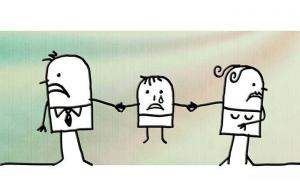Sandra García Sánchez-Beato: combining psychology and meditation
Psychotherapy does not arise in a vacuum, but relies on a series of ideas and practices that have their roots in history. However, having arisen in Western societies, it has not always been in direct contact with ideas and practices from other cultures.
That is why in recent decades, as globalization has intensified, psychology has been incorporating other looks and other procedures to intervene in the management of mental states, such as the meditation. On this subject we will speak in the following lines, in which we interview the psychologist Sandra García Sánchez-Beato, interested for a long time in these ancient practices.
- Related article: "The 8 types of meditation and their characteristics"
Sandra García Sánchez-Beato: psychology and meditation working in unison
Sandra García Sánchez-Beato She is a psychologist with an integrative humanistic orientation, and she has been treating people for many years both in person at her Madrid office and through online sessions. In this interview she talks about how practices linked to meditation and creative thinking reinforce the therapeutic process.
How do you combine psychological therapy, on the one hand, and the ancient practice of meditation, on the other? How do these two practices meet?
Meditation is a vehicle that yogis and great accomplished masters have used to deepen the knowledge of the mind. They are great psychologists, students of consciousness.
Reflection, analysis, research are also part of the path of meditation. Buddha told us “Do not believe in something simply because you have heard it… Rather, after observation and analysis, when you find something that is in accordance with reason and leads to the good and the benefit of each and everyone, then accept it and live accordingly thereto".
Western psychology is a very new current, if we compare it with the tradition of meditation. It is built from our perspective on how we observe and analyze the world. The integration of both is a way of joining paths and offering a language adapted to our current world. Today, fortunately through scientific exploration it is being demonstrated as the practice of Mindfulness causes changes in the brain by thickening the prefrontal lobe, our most evolved area as a species.
In meditation we have direct perception of the mind observing itself. We promote metacognition and self-awareness. Values such as empathy and altruism are integrated and it favors better management of emotions. This helps us to disidentify from our conditioning, to observe our neuroses from a more friendly space and gives us the experience of resting in our own nature. Something that is not achieved from the conceptual, because the essence of the mind is precisely non-conceptual.
Psychology follows a complementary path. It helps us to build a strong, centered Self and to soften emotional burdens. With meditation we release the grasp of the Self and discover our true essence. It may seem like a contradictory path, but we cannot let go of clinging to the Self, if we do not have a well-anchored and integrated Self. If not done this way, it can lead to serious emotional problems. In psychology we work from duality.
The experience of meditation leads us to unity. To a space where the barriers of yours and mine vanish. Not from a psychotic aspect, but from a non-conceptual space free of suffering. It fosters the values of compassion and altruism because it keeps us from self-centeredness. To the extent that we are psychologically more stable and integrated, we can take that step.
In the face of what kinds of problems do you find meditation especially useful?
When there is a limiting emotional identification that subordinates our life, or conditions that trap us in harmful behaviors, a Time and time again, meditation helps us to realize the inherent qualities of our mind, such as its spaciousness, lightness, and goodness.
This so simple allows us to perceive that there is nothing fixed or solid in it. We can observe how thoughts, emotions, feelings, ideas... they are manifestations of the mind that arise and dissolve in it, like waves melt in the ocean.
This experience helps us to trust that we can transform our suffering into an opportunity for growth and free ourselves from it, because it is not part of our primordial nature. People with low self-esteem, insecurity, anxiety, obsessions... they feel better and are surprised when they connect, even for an instant, with that direct experience: the inherent goodness and calm of that inner space. They discover their potential by strengthening their self-confidence. They look inward and begin to take responsibility for their lives.
The management of conflicting emotions also changes as we train ourselves in meditative practice: anger management, impulses, self-harm, emotional dependencies, jealousy, disruptive behaviors, attention deficit, limiting, obsessive thoughts, fears, etc. By realizing their insubstantiality we make ourselves less reactive and give them less power. We get less hooked and get used to going through them, letting go and transforming them.
How does the process of improvement take place through meditation? How are the people who come to you noticing it?
Patients are observing that they are less reactive to external circumstances, increasing their capacity for reflection and acceptance. They are more adjusted to their reality, without dramatizing situations, or devaluing, or idealizing. This supports their ability to focus on the present, enjoy what they have, and not spend so much time projecting negative events or getting hooked on a painful past.
The practice of the disidentified observer of meditation is integrated into her mental continuum, providing a space of protective awareness against conflicting emotions. By not identifying as much with them, they are less conditioned.
Another benefit is that by being more focused and integrated they allow themselves to be more balanced and stable in adverse situations. They learn to love themselves, take care of themselves and take responsibility for their lives, becoming aware of the causes and conditions of their actions.
Observing the mind, investigating what is happening within it, gives them a sense of control over themselves and offers them the opportunity for change. They make their mind more flexible and they are more compassionate towards others because the ego dissolves, resting more in its primordial nature. This is especially trained in visualization meditations, where it connects with this subtle energy of the mind.
I presented a clinical case at the first Congress of Humanist Psychotherapies in Barcelona, with which I worked since the method of psychomeditation, a term that I coined years ago to define this integration of meditation and psychotherapy. It was about a patient who began to practice meditation, in a weekly group, and we introduced the practice into the sessions.
Today he has integrated meditation into his day to day life and the changes are very significant. He is very aware of the benefit he has brought within his therapeutic process, in aspects such as his emotional stability, autonomy, his ability to coping with difficulties (for example that of this pandemic), the decrease in its reactivity and confidence in its nature as a space without damage emotional.
As a professional, what do you think are the advantages of adopting an integrative perspective when offering psychological assistance services?
Human beings are complex and multi-faceted. We interact from the cognitive influenced by our thoughts; we speak and communicate with our words and our body, which results in a certain behavioral behavior.
We have a varied and complex emotional world, which conditions relationships with ourselves, with others and with the systems in which we live. We enjoy an internal and spiritual world that some leave aside, but it is an inherent part of our human nature.
It seems incoherent to me to approach a therapeutic process from reduced plots, when we live from a whole. Our body, speech and mind form an indissoluble unit. All our areas have to be integrated and coordinated, it is a teamwork that we can approach from therapy, meditation and body work. To achieve a full brain, and an integrated personality, we must work holistically.
Your training in Fine Arts is also one of the influences you start from in your work as a psychologist. How do you use drawing in this area?
I love art and all its manifestations, that's why I studied Fine Arts as a first option. Art and psychology are closely linked. Now I incorporate it into my sessions because it is related to that unique and creative expression that arises from a more intuitive and less rational space. The drawings provide me with a lot of information because they do not pass through reason. I usually use them after psychomeditation dynamics, where more subtle and deeper spaces of consciousness are reached obtaining very interesting results.
Through a sequential drawing process, it is possible to trace how the unconscious, which I was able to harbor traumatic events, it reveals those experiences in a transforming and healer. Sometimes there are very revealing sequences about denied or repressed facets of oneself. It works very well in all ages, both with adults and with children and adolescents.
With patients with rigid or obsessive features, I like to use it (not so much for them), because they discover facets or nuclei of conflict that otherwise would not be allowed. Suddenly they see something unexpected reflected and they comment "I didn't want to draw that ...", "I don't know why this image came out ..." and that surprises them because it helps them to become aware of what was denied. A more subtle door opens to the unconscious than when expressing itself with an image, it does not leave so much room to escape with words or logic.



